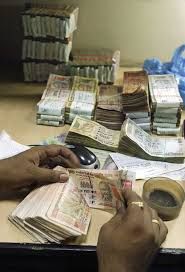 | « Back to article | Print this article |
 For the time being, the Reserve Bank of India is likely to stick to a range of 58-62 a dollar for the rupee, despite the dollar appreciating against the euro.
For the time being, the Reserve Bank of India is likely to stick to a range of 58-62 a dollar for the rupee, despite the dollar appreciating against the euro.
This is because the softening global crude oil prices and continuation of gold import curbs are expected to help narrow the country’s current account deficit.
On Friday, the euro weakened to a near 14-month-low against the dollar, after the European Central Bank announced a fresh round of stimulus and promised more if required.
Currently, the dollar is trading at 1.29 per euro, compared with the previous close of 1.3.
Typically, when the dollar rises against the euro, the rupee weakens against the dollar.
“We expect RBI to hold the rupee at 58-62 a dollar for now though the dollar has strengthened below 1.3 per euro.
"The impact of a stronger dollar is largely offset by softening of oil prices and the continuation of gold import curbs.
"Swings of $10-a-barrel in crude oil prices have an impact of about $8 billion on the CAD. Restrictions on gold imports will likely contain the CAD at 1.7 per cent of gross domestic product (GDP) in FY15,” Indranil Sen Gupta, India economist, Bank of America Merrill Lynch, said in a note to clients.
Easing of geopolitical tension relating to Russia and Ukraine has resulted in Brent crude oil prices falling below the $100-a-barrel